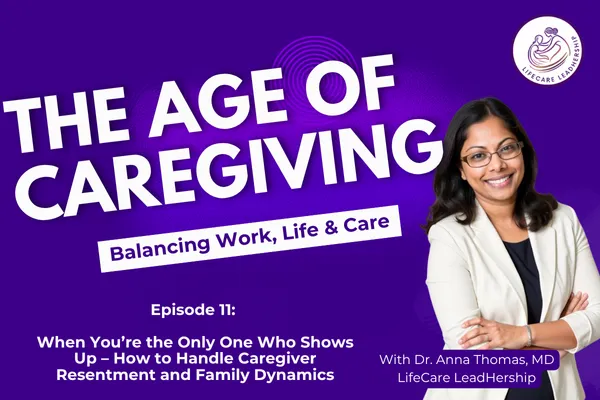
When You’re the Only One Who Shows Up
“Why am I the only one doing everything?”
It’s a question whispered in kitchens.
Typed into group chats and never sent.
Swallowed during hard moments and sleepless nights.
If you’re the default caregiver in your family—doing all the things, carrying all the weight, showing up when no one else does—you’re not alone.
You’re also not doing anything wrong.
But you may be carrying resentment. And that’s a signal worth listening to.
Resentment Is Not a Failure. It’s a Signal.
Many caregivers feel shame when resentment creeps in.
But that feeling isn’t weakness. It’s wisdom.
It’s your body and mind saying:
This is too much. I can’t sustain this pace. Something needs to change.
If you ignore that voice, burnout is not far behind.
So how do you respond with strength, not silence?
With clarity, not conflict?
Here’s the 3-part framework I teach inside the Thrive & Lead coaching program.
Step 1: Acknowledge the Load You’re Carrying
One of the biggest barriers to change is invisibility—not just from others, but from yourself.
So many caregivers downplay what they do.
“It’s just what I have to do.”
“I’m used to it.”
“They wouldn’t know how anyway.”
But ask yourself this:
If someone else was doing what you’re doing, would you think they deserved help?
Write it all down.
Appointments you schedule
Medications you manage
Conversations you mediate
Bills you track
Emotions you absorb
Name it. See it. Own it.
Because you can’t ask for what you need until you recognize what you’re already giving.
Step 2: Set the Record Straight With Calm, Not Conflict
You’ve done the internal work. Now it’s time to communicate.
This doesn’t have to be dramatic. In fact, it shouldn’t be.
Try this script:
“I wanted to update you on what I’ve been handling. I’ve been managing appointments, meds, care needs, and daily logistics, and it’s becoming unsustainable. I’d like to talk about how we can better share the load.”
You’re not shaming.
You’re not demanding.
You’re leading.
If they step up, great.
If not, you’ve created a line in the sand that centers your well-being.
And if this isn’t the first time you’ve had this conversation?
That brings us to step three.
Step 3: Lead Without Waiting for Consensus
Sometimes the support never comes.
And leadership means moving forward anyway.
Here’s what that can look like:
Setting boundaries without apology
Outsourcing where you can (even if family could help)
Creating a rhythm and structure that works for you, not for group approval
Releasing the idea that shared DNA means shared responsibility
You can lead without permission.
You can protect your peace even if no one else changes.
Clara’s Story: Peace Without Permission
Clara was caring for her father with dementia.
Her brothers checked in occasionally but never offered real help.
Together, we wrote out her task list. More than 30 weekly items.
Then we crafted a simple family message asking for specific support.
One brother offered money. The other went silent.
Clara stopped waiting.
She hired backup help, built a routine, and let go of resentment.
She didn’t just find peace. She found power.
You Don’t Have to Wait for Others to Step Up
If you’re tired of carrying everything, you don’t need to wait for permission to lead differently.
You’re not wrong for being tired.
You’re not weak for feeling hurt.
You’re not dramatic for wanting help.
You’re a leader who has been carrying too much alone.
It’s time to shift from silent suffering to clear strategy.
From resentment to resilience.
From surviving to leading.
You’ve got this.
And I’ve got you.
Explore More from The Age of Caregiving™
🎧 Listen on Buzzsprout: https://www.lifecareleadhership.com/podcast
📺 Watch on YouTube: https://www.youtube.com/@ageofcaregiving
📝 Read more on our Blog: https://lifecareleadhership.com/ageofcaregiving
The views and opinions expressed in this post are solely my own and do not reflect the views of any past or present employer of Dr. Thomas. This content is for educational and informational purposes only and is not intended as medical or legal advice.
